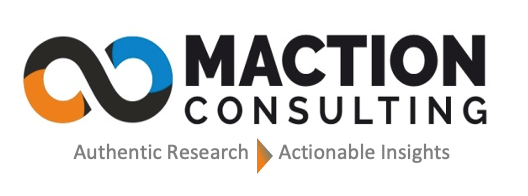In today’s hyper-competitive marketplace, businesses live or die by the quality of their customer experience. Happy customers are repeat customers, brand advocates, and the lifeblood of sustainable growth. Conversely, dissatisfied customers can quickly spread negative sentiment, leading to significant reputational and financial damage. The key to navigating this dynamic landscape lies in effectively capturing, analyzing, and acting upon customer feedback. This is where Customer Feedback Dashboards become an indispensable tool, transforming raw data into actionable insights for rapid business fixes.
Imagine a doctor trying to diagnose a patient without any vital signs or medical history. Similarly, a business operating without a clear understanding of its customers’ perceptions is flying blind. Customer feedback, whether it’s a glowing review, a pointed complaint, or a suggestion for improvement, is the pulse of your business. However, this feedback often arrives through disparate channels – social media, surveys, emails, call center interactions – making it difficult to consolidate and interpret.
This is precisely the problem that customer feedback dashboards solve. Tools like Zoho Analytics, Tableau, or Microsoft Power BI allow businesses to centralize all incoming customer feedback into a single, intuitive visual interface. Think of it as a dynamic report card for your business, providing a holistic view of customer sentiment, pain points, and areas of excellence. Instead of sifting through countless spreadsheets or individual emails, a dashboard presents key metrics at a glance: net promoter score (NPS) trends, customer satisfaction (CSAT) scores per product or service, frequently mentioned keywords in reviews, or the volume of complaints related to a specific process.
The power of these dashboards lies in their ability to facilitate quick business fixes. When you can immediately visualize a spike in complaints about a particular product feature, or a dip in satisfaction ratings for your online checkout process, you can swiftly allocate resources to address the issue. This agility is crucial in an era where customer expectations are constantly rising and negative experiences can go viral in minutes.
How Customer Feedback Dashboards Work:
At their core, these dashboards integrate data from various sources. For instance:
- Survey Platforms: Data from NPS, CSAT, or custom satisfaction surveys.
- CRM Systems: Information from customer service interactions, support tickets, and sales notes.
- Social Media Monitoring Tools: Sentiment analysis and mentions from platforms like Twitter, Facebook, and Instagram.
- Website Analytics: User behavior data that might indicate frustration (e.g., high bounce rates on certain pages).
- Email and Chat Transcripts: Keyword analysis to identify common themes.
Once this data is collected, the dashboard visualizes it using charts, graphs, heatmaps, and tables. For example, a “Word Cloud” might highlight frequently used terms in customer reviews, quickly pinpointing areas of concern or delight. A trend line could show how customer satisfaction has evolved over time, allowing businesses to gauge the impact of recent changes.
Case Study 1: Streamlining Retail Checkout for a Clothing Brand
A mid-sized clothing retailer, “Fashion Forward,” was experiencing a sudden surge in abandoned online shopping carts. Their CSAT scores, particularly for the “checkout experience,” were consistently low. They implemented a customer feedback dashboard using Zoho Analytics, integrating data from their e-commerce platform’s abandoned cart reports, post-purchase surveys, and customer service chat logs.
The dashboard immediately highlighted a recurring theme: customers were complaining about a complicated discount code application process and slow page loading times during the final steps of checkout. A “funnel analysis” on the dashboard clearly showed a significant drop-off at the “apply discount” stage. Within days, Fashion Forward’s IT team streamlined the discount code field and optimized image loading on the checkout pages. Follow-up surveys and real-time feedback on the dashboard showed an immediate 15% increase in completed purchases and a 20-point rise in their checkout CSAT score, directly impacting their bottom line.
Case Study 2: Improving Food Quality at a Restaurant Chain
“The Daily Dish,” a popular casual dining restaurant chain, noticed a subtle but consistent decline in their overall online review ratings. While no single issue stood out, the cumulative effect was concerning. They deployed a feedback dashboard that aggregated reviews from Google, Yelp, and their internal comment cards.
The dashboard, particularly through its “sentiment analysis” feature, started to flag a recurring, subtle negative sentiment around “food temperature” and “consistency.” While individual reviews might not explicitly state “cold food,” the system picked up on phrases like “not as hot as I expected” or “sometimes perfect, sometimes off.” The operations team investigated and discovered an inconsistency in kitchen processes across different branches, leading to varying food temperatures upon serving. They implemented standardized temperature checks and new plating procedures. The dashboard then served as a real-time monitor, showing a gradual but steady improvement in food quality sentiment, leading to a significant rebound in overall ratings and customer loyalty.
In conclusion, customer feedback dashboards are no longer a luxury but a necessity for any business striving for excellence. They empower organizations to move beyond reactive problem-solving to proactive optimization. By providing a clear, real-time view of customer sentiment, these dashboards enable quick, data-driven decisions that directly translate into improved customer satisfaction, operational efficiency, and ultimately, sustained business success. Investing in a robust feedback dashboard is an investment in understanding your most valuable asset: your customer.


